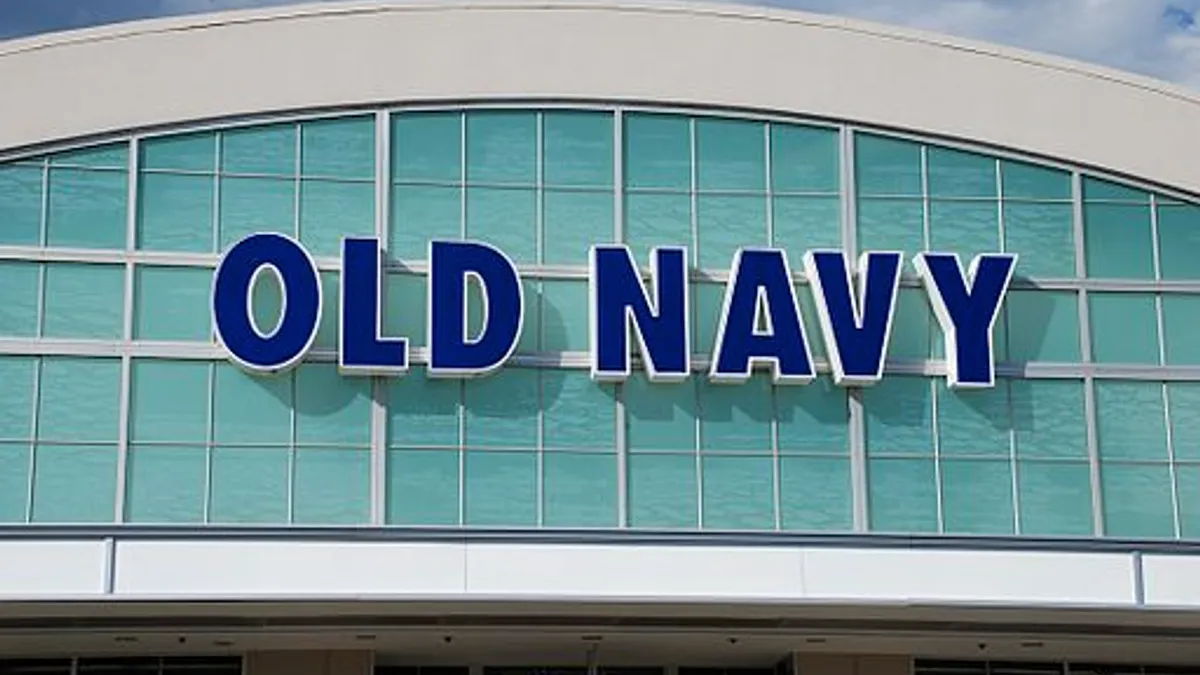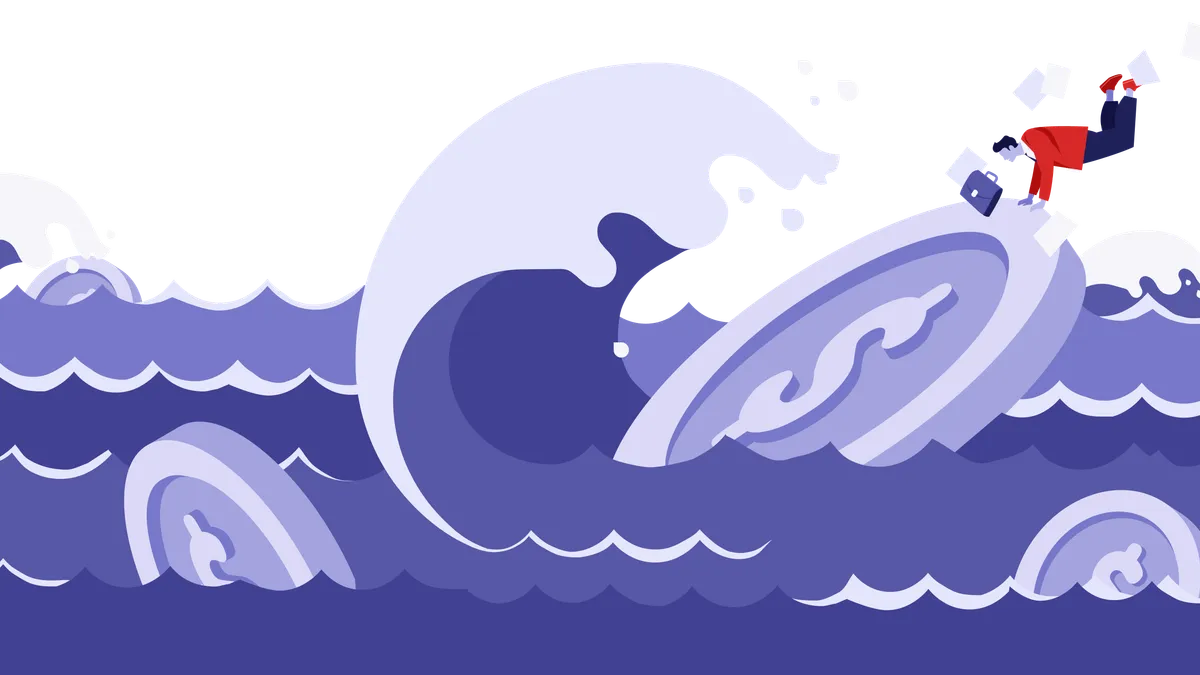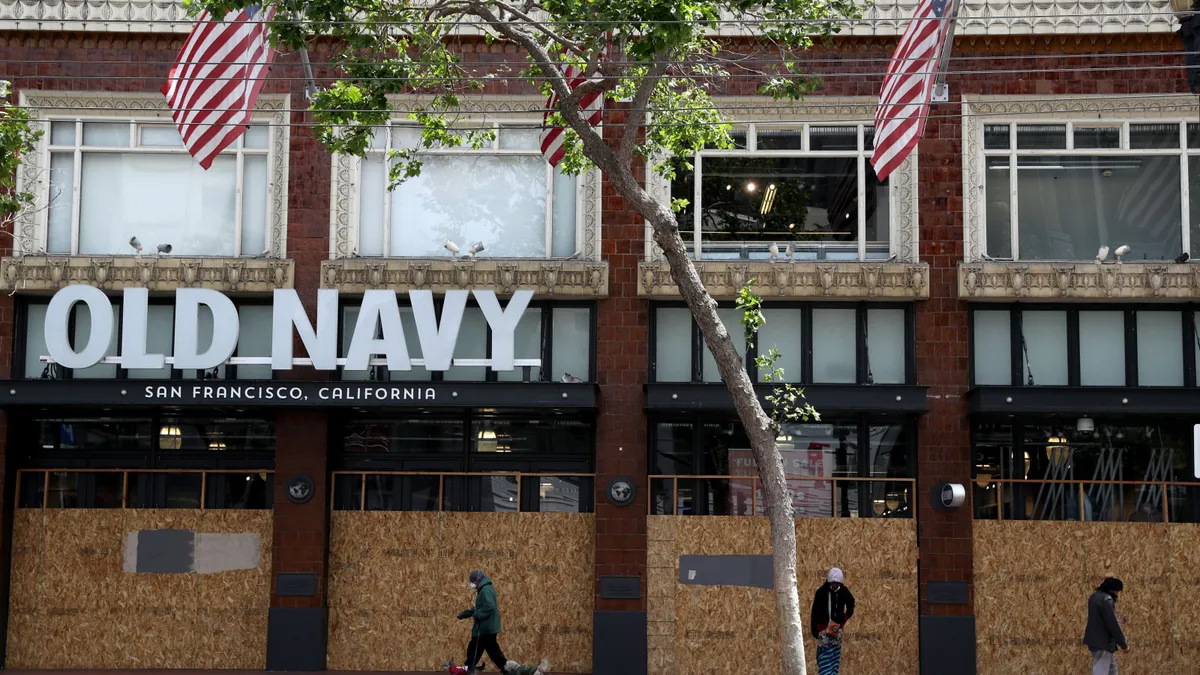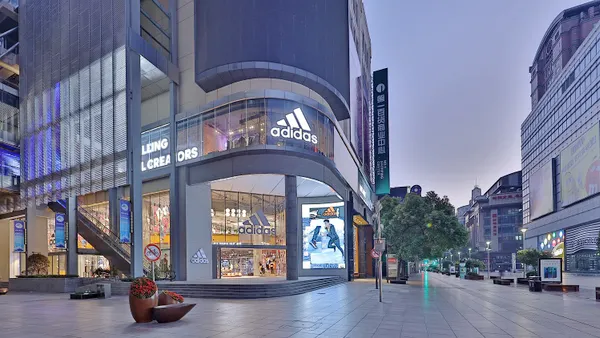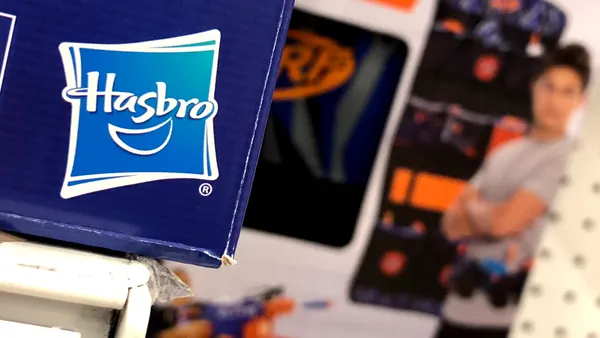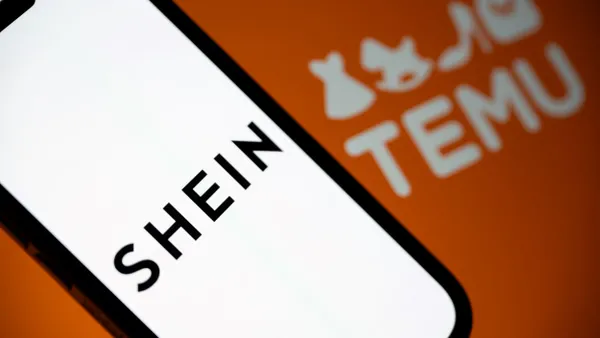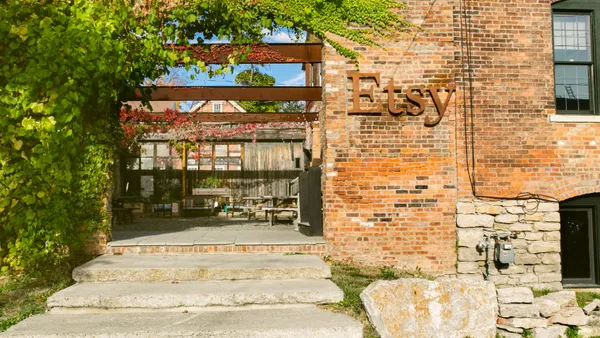Dive Brief:
-
Gap Inc.’s first quarter financial report Thursday showed that the struggling apparel company is still in the game: Q1 net sales were $3.4 billion, about flat to the year-ago quarter as they were hit by some $11 million in currency fluctuations. Diluted earnings were $143 million or 36 cents per share, up from $127 million or 32 cents per share in the year-ago quarter. The results bested FactSet analysts expectations cited by MarketWatch of 29 cents per share on revenue of $3.39 billion.
-
Same-store sales in the period rose 2%, compared to a 5% decline in the year-ago quarter. By brand, Old Navy Global same-store sales rose 8%, compared to its 6% decline in the year-ago quarter; Gap Global same-store sales fell 4%, down from the 3% decline last year; and Banana Republic Global same-store sales fell 4%, compared to its 11% dive last year.
-
The company also reaffirmed its full-year diluted earnings guidance to range between $1.95 and $2.05 per share, in line with analyst expectations cited by MarketWatch for $1.99 per share. Gap shares rose more than 6% in late trading Thursday.
Dive Insight:
At a time when apparel retailers are tumbling into bankruptcy and shuttering stores, Gap Inc. is beginning to demonstrate that it can survive. “We are pleased with our positive comp and earnings growth this quarter,” Gap CEO Art Peck said in a statement Thursday. Calling the retail environment "challenging," Peck added, “We've made substantial improvements in product quality and fit, and our increasing responsive capabilities are enabling us to better react to trends and demand."
Its Banana Republic brand, however, is proving to be an albatross.
“Unfortunately for Gap, the group's progress is all down to Old Navy,” GlobalData Retail Managing Director Neil Saunders said in an email to Retail Dive. “Outside of this powerhouse of growth, the company's other brands fared far less well. …This imbalance means that Gap is firing on just one cylinder. More worryingly, it also undermines the group's contention that improvements to styling, quality and fit are delivering results. On the contrary, we believe that Gap and Banana Republic are still brands in search of a purpose and identity.”
Although the flagship Gap brand is beginning to hold its own against the competition, it continues to face pressure from fast-fashion retailers like H&M. Meanwhile, Banana Republic is foundering, according to Saunders. That, he warned, is emerging as a problem for the company as a whole, beyond its drag on earnings and sales.
“The brand has lost any semblance of an identity. Its assortment is a confused mishmash of products which are over-priced and out of step with what modern consumers want,” he said. “The business has no real purpose, and unless management can pull off a radical repositioning, we believe the division is doomed to terminal decline. At present, we see no sign of progress and, in many ways, trying to nurse Banana back to health is an enormous distraction from the better parts of Gap's business.”
Better-priced Old Navy has been Gap’s bright spot for several quarters now. Under ex-CEO Stefan Larsson (who left for a brief stint as Ralph Lauren’s chief executive and is an H&M veteran), the chain sped up its supply chain to quickly shift merchandising to best sellers. As Old Navy has solidified as the company’s saving grace, its importance has only grown more outsized, Saunders warned.
“The pressures on Gap will continue, and the sales forecast is for a flat to slightly negative year,” he said. “However, this is predicated on the continued success of Old Navy. Should that brand stumble in merchandising or assortment, the final year outcome could be significantly worse.”



